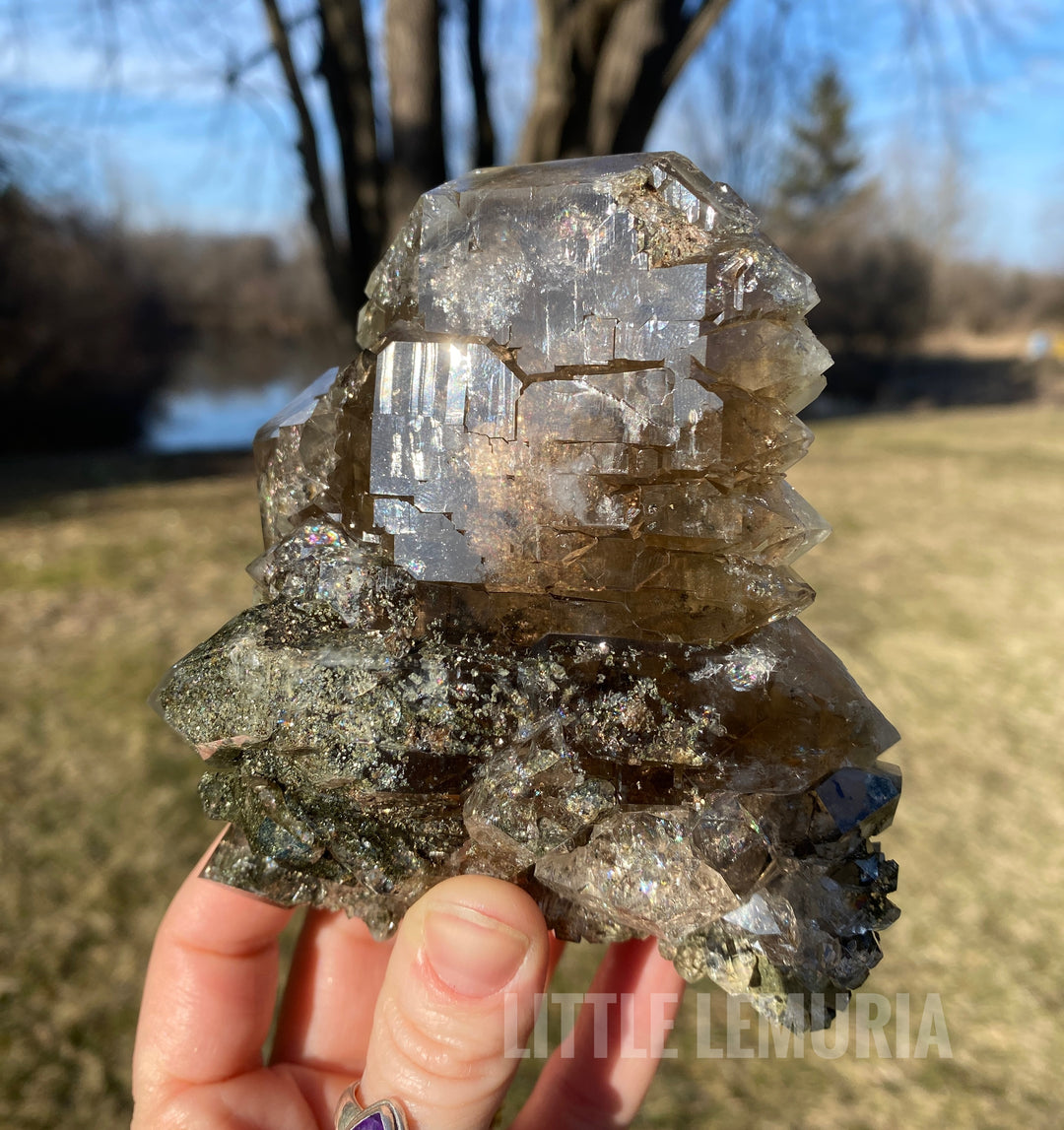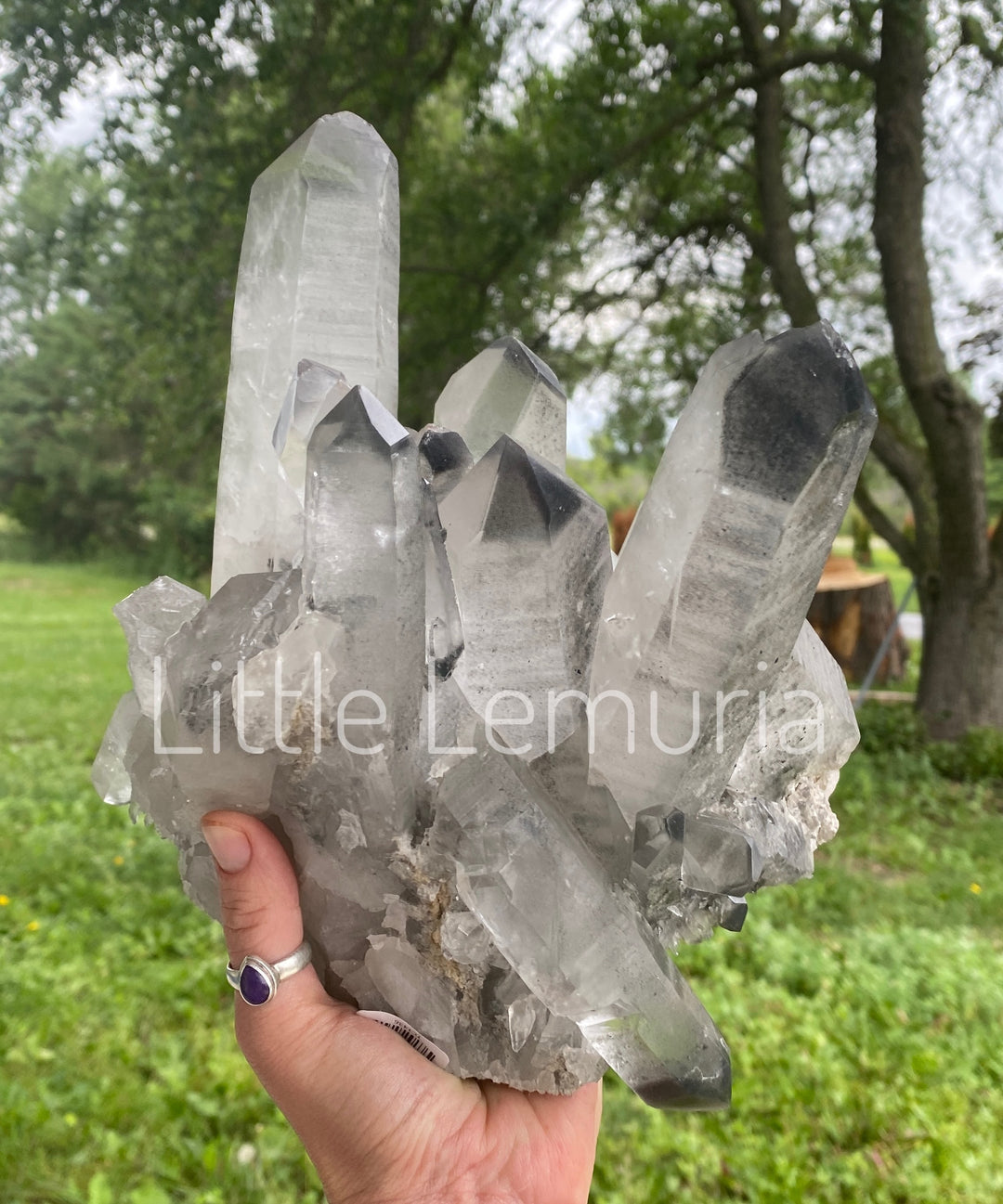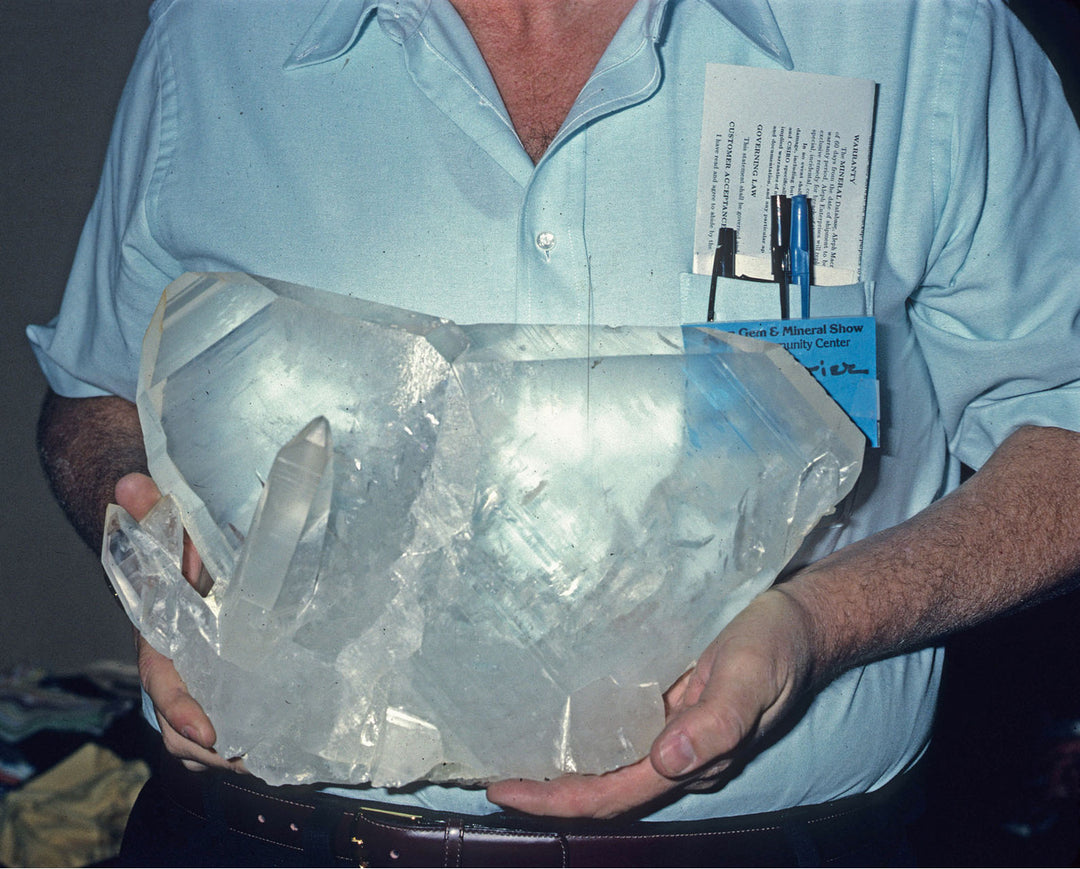What's the deal with Record Keepers?
It’s time to dust of the ol’ blog and what better topic than our namesake, the mysterious record keeper, aka TRIGON. This has been a much requested and long-awaited topic for me to cover. I often answer questions in our live sales on Instagram about their formation and, in our experience, these little triangles are the most sought-after characteristic of quartz. So…what’s all the fuss about? Are they truly rare? Why are some raised and some recessed, some pointing up and some pointing down? What makes them so mysterious and inviting to mystics and mineral collectors alike? Hopefully after diving into this blog you will have more answers than you ever had questions about record keepers.

Let’s first visit what raised record keepers are NOT. They are not a form of etching, although they are often associated which etched crystals. Record keepers may commonly form on a crystal that has been etched, but that does not mean they were formed by the same process as the etching. Record keepers are also not necessarily a defect in the crystal (but this is debatable). They are in fact part of the normal growth process of several different minerals including but not exclusive to quartz.

A crystal can form from a liquid, a gas, the contact of a liquid with a solid, the contact of a gas with a solid, the contact of a liquid with a gas, the mixing of liquids, or the mixing of gases. That’s a wide range of possibilities! The pressure, temperature, and chemistry, of these interactions will begin changing as soon as crystal formation begins. On the contrary, crystal formation will stop when a change in temperature, pressure, or chemistry favors a different reaction (or no reaction). If the environment is right, the atoms of the crystal can favor rejoining the liquid rather than staying bound to the crystal lattice.

Halite, as an example, also known as sodium chloride or rock salt, demonstrates this phenomenon rapidly. When placed in a liquid solution of water, the atoms immediately begin dissolving from the crystal and into the liquid. This is one process that is referred to by mineral enthusiasts as etching. In the interest of being complete, there is another process referred to as etching in the industry that involves using specific chemicals to dissolve away specific minerals. Hydrofluoric acid, as an example, will artificially etch calcite almost instantly but has no etching effect on fluorite. But for our purposes, only natural processes will be referenced.
One more bit of defining before we jump into the heart of this topic. In theory, the dissolution of quartz occurs in nature when the pH, organic acids, temperature, and a few other over my head processes all work in conjunction to pull silica away from the formed crystal. From the published articles I have read in scientific journals, there is no clear explanation for the kinetics behind naturally “etched” quartz. In the words of my good friend and geologist Fred Krone, “(etching) is a very complex and dynamic system”. This is how I will be approaching the topic of record keepers. There are many strong theories, but no holy grail explanation. It is too complex and dynamic to nail down in 1000 words or less.

First, I want to give a visual representation of what might be referred to as a record keeper. In the example above, the rhombohedral faces of the crystal appear shrunk, duplicated, and stacked on the termination of the crystal. While this looks like, and certainly could be considered a record keeper, this crystal growth habit is defined as Artichoke Quartz. A member of the sprouting quartz family, this record keeper like pattern is created when rapid growth and impurities in the lattice create lattice defects. The impurities are organized within the crystal lattice in such a way that the faces have the look of relatively organized triangles. Not skeletal, not elestial, but in a category of their own.

Next, let’s define “trigon” markings. This is another metaphysical buzz word, but for our purposes let’s stick to the facts. Trigon literally means triangle. It’s not a fancy mineral term, it’s not excusive to record keepers, and one dictionary even calls it “an archaic word for triangle”. It is safe to say that there is no difference between a record keeper or a trigon marking other than the metaphysical differentiation between the two words.

There are upside down recessed trigons, right side up raised trigons with bowed sides, and there are some stones that seem to have some combination of both features. It is important to note that none of these are exclusive to quartz. Trigons can be seen on spodumene, pyrite, ruby, and several other minerals. Record keepers likely represent an interruption in the platy hexagonal crystal lattice structure during crystal formation. This interruption cuts the hexagonal features in half to trigonal, changing the number of sides from 6 to 3. Microscopic analyses should be considered to determine if the record keepers are truly triangles or have truncated edges. Also, a full inventory of all crystals exhibiting trigonal record keeper features should be completed to validate this theory.

Whether the record keeper is an ‘inny’ or an ‘outy’ has to do with how the interruption in crystal formation occurs. There are so many forces interacting in infinate interchanging ways during crystal formation – a slight shift in one will have an influence on everything else. There also may be an external cause, such as the dimensions of the crystal pocket.

Crystals that have broken during the process of formation and had time to heal (like the one above) will exhibit many record keeper like shapes as it begins to construct a termination over the broken surface. This is what’s referred to as “healing” or a “healed crystal”. Oddly enough, this term does not have its roots in the metaphysical crystal healing community. In the case of healed crystals, the triangles over the surface represent a break in the parent crystal that is then used as a catalyst by residual or subsequent fluid or gas to recrystallize.

I sincerely hope I have shed some level of light on what a record keeper is and how they might be formed. This was one of the most complex blogs I have ever taken on and coming to the end is very rewarding. There is more room to expand into the realms of dissolution quartz and growth interference quartz and for sure more about healing...but for now, take some time to digest and hunt for record keepers in your collection.
Special thanks to Fred Krone at Northern Maine Minerals for helping me work through my questions...no matter how long it takes.






